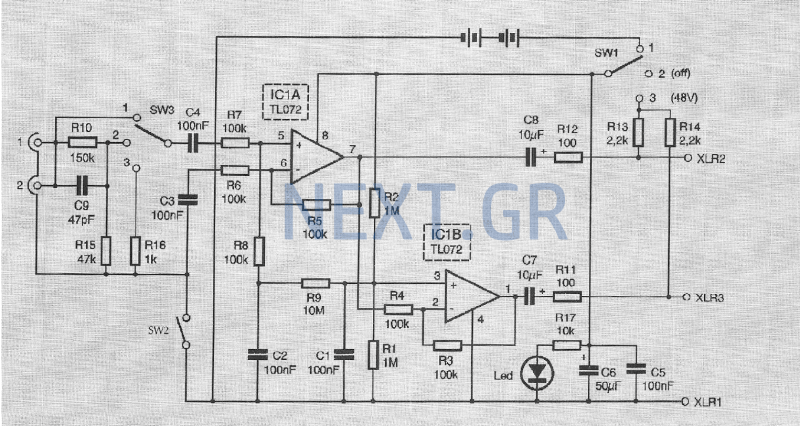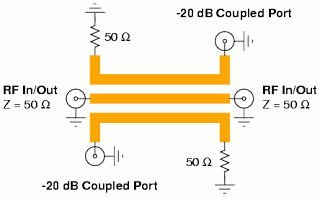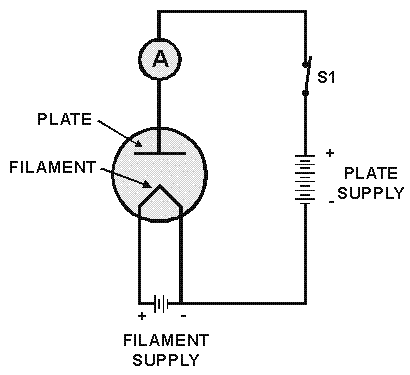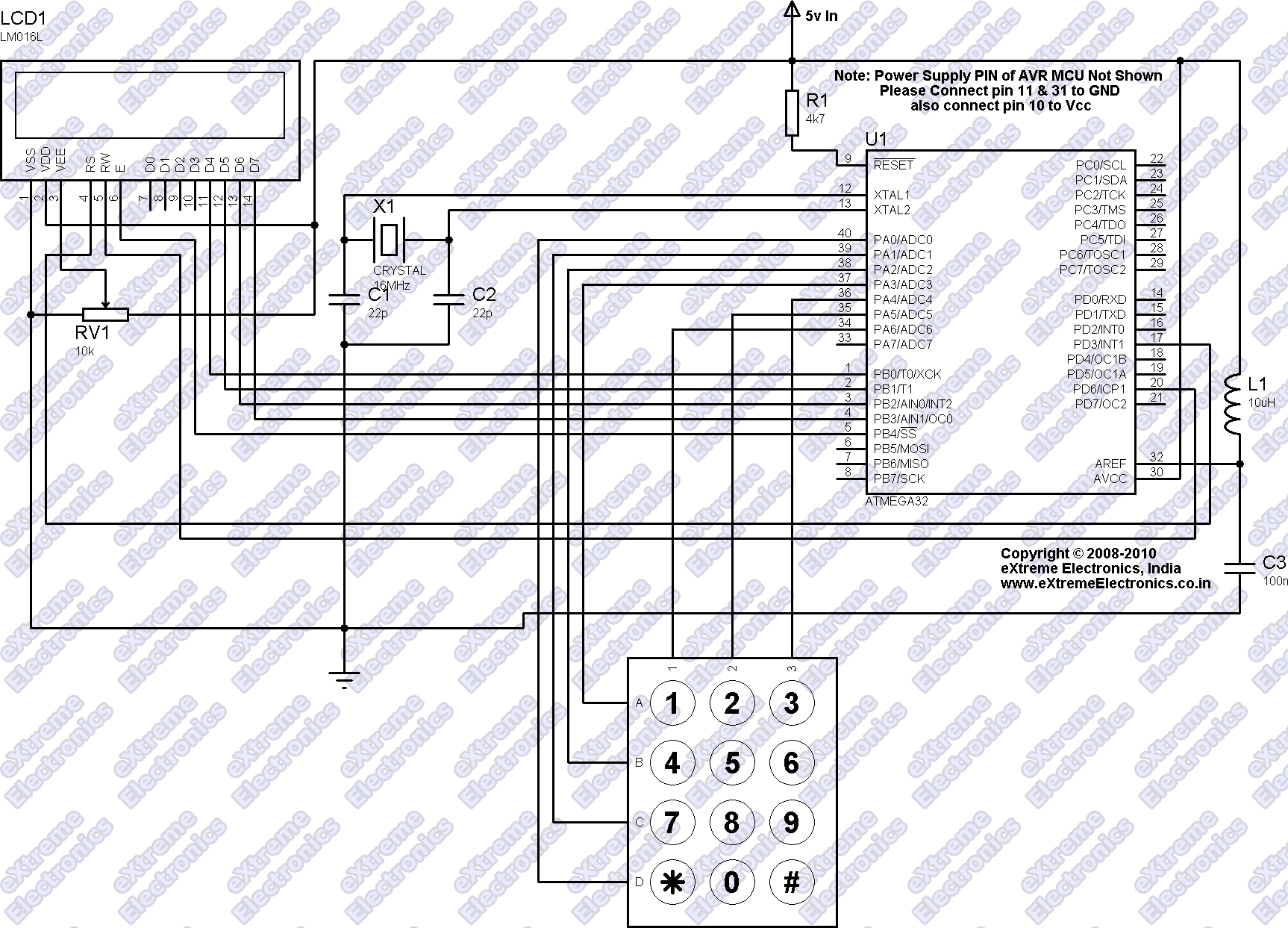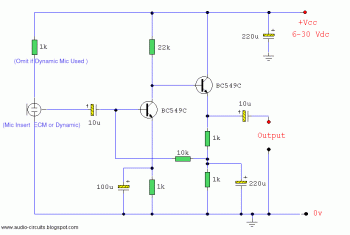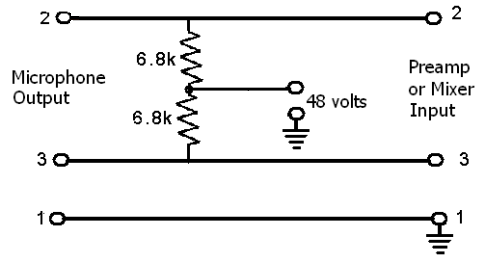
Altec 1566 vacuum tube mic preamp and direct box
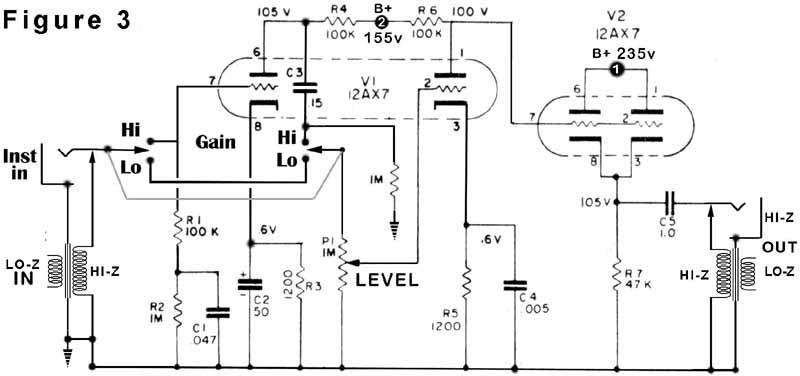
V1 and V2 are 12AX7 dual triodes. Each half of V1 is configured as a Class A voltage amplifier in a Common Cathode arrangement. In contrast, both halves of V2 are connected in a Cathode Follower configuration to provide current gain. Tubes are high impedance (Hi-Z) devices, similar to passive guitars or basses. Besides amplifying voltage, they can also convert impedance from high to medium, achieving current gain without level loss, unlike transformers. The necessity of transformers at both the input and output is to match impedance with external devices. Low-impedance (Lo-Z) balanced sources, such as microphones with XLR connectors, can drive long cable lengths. The input transformer converts Lo-Z to Hi-Z, stepping up a small signal to a higher, yet more vulnerable signal. The power supply transformer manipulates voltage and current similarly. After amplification, the output transformer lowers the impedance to a level less susceptible to electrical interference. The filament in a vacuum tube heats the cathode to emit negatively charged electrons. High voltage at the plate accelerates these electrons while the grid regulates their flow. Each 12AX7 filament needs 150 milliamps (mA), resulting in a total draw of 300mA for two in parallel. The plate current can be calculated using the voltage drop across any plate resistor. For instance, with R4 showing 135VDC on one side and 105VDC on the other, the voltage drop across R4 is 30 volts, resulting in a current of 0.3 mA when no signal is applied. The filament current is significantly higher, at 500 times that of the plate. The 1566A includes 8-pin (octal) tube-style sockets for plug-in transformers or dummy plugs for balanced or unbalanced operation. Input and output connections are made via barrier strips, intended for use as a microphone amplifier in public address systems. When operating at a nominal -10 dBm (with a 600-ohm termination), the 1566A provides acceptable sound quality. At a nominal level of +4 dBm, peaks will sweetly saturate at +15 dBm, with asymmetrical clipping starting at approximately +17 dBm. Phantom power is required for operation. A power supply can be configured to provide all necessary voltages, including phantom power, although filament voltage will need regulation. Building a power supply for a vacuum tube circuit involves various considerations. The Altec 1566 does not have a straightforward solution but offers numerous options, each with its advantages and disadvantages. Vacuum tubes need two voltage sources: one for the filament (similar to a light bulb) and one for the plate. The filament for the 12AX7 series can be wired in parallel (6.3V at 300 mA) or in series (12.6V at 150 mA). Each triode amplifier within the 12AX7 requires about 1 mA for its plate circuit. The power transformers available typically have higher current capacities than necessary, as they are often replacements for Fender guitar amplifiers.
The circuit utilizes 12AX7 dual triodes, where V1 acts as a Class A voltage amplifier while V2 functions as a Cathode Follower. The Common Cathode configuration of V1 allows for effective voltage amplification, leveraging the high input impedance characteristic of vacuum tubes. V2's Cathode Follower design provides current gain, maintaining a low output impedance, which is crucial for driving loads effectively.
The input transformer plays a vital role in impedance matching, converting low impedance signals from microphones to high impedance suitable for the tube circuitry. This conversion is essential for minimizing signal loss over long cable runs, ensuring that the integrity of the audio signal is maintained. The output transformer then matches the output impedance to a level that can effectively drive speakers or other audio equipment while reducing susceptibility to noise and interference.
The filament circuit requires careful consideration, as it powers the cathodes of the tubes. The choice between parallel and series wiring affects the voltage and current requirements. The design must accommodate the filament's power needs, ensuring stable operation without introducing hum or noise into the audio signal. With a current requirement of 150 mA per filament, the total draw for two tubes in parallel is 300 mA, which must be supplied by the power supply.
The output characteristics of the amplifier are designed to handle specific signal levels, with the circuit optimized for operation at -10 dBm and capable of handling peaks up to +15 dBm before clipping occurs. This design allows for a wide dynamic range, making the circuit suitable for various audio applications, including public address systems and recording equipment.
Overall, the design of this circuit exemplifies the principles of tube amplification, focusing on impedance matching, signal integrity, and efficient power management to achieve high-quality audio performance.V1 and V2 are 12AX7 dual triodes. Each half of V1 is wired as a Class A voltage amplifier in a configuration known as Common Cathode. By comparison, both halves of V2 are wired together in the Cathode Follower configuration for current gain. Don ’t freak dudes and dudettes! Tubes are real high impedance (Hi-Z) devices — just like a passive guitar or bass — and, in addition to making things louder (voltage gain), they can also convert impedance — in this case — from high to medium (current gain). Unlike transformers, tubes and transistors can manipulate impedance without a level loss. Remember, the outside world is a nasty place. Have you ever had an instrument cable that crackled when stepped on That phenomenon is not an example of a bad cable so much as it ’s the wrong cable for the application.
(It ’s capacitance is too high and the insulation between conductors is inadequate. ) The reason there are transformers at both the input and the output is to match impedance with the outside world. Low-impedance (Lo-Z) balanced sources, such as microphones outfitted with XLR connectors, can drive long lengths of cable.
The input transformer converts Lo-Z to Hi-Z and in doing so takes a small signal and steps it up to a higher albeit more vulnerable signal. (The power supply transformer manipulates voltage and current in the same way. ) After the tubes do their thang, the output transformer brings the impedance down to a level that ’s semi-impervious to electrical interference.
While on the subject, the filament in a vacuum tube heats the cathode so that it will emit electrons, which are negatively charged. The high voltage at the plate accelerates and attracts the electrons while the grid controls electron flow.
Each 12AX7 filament requires 150 milliamps (mA) so that the two in parallel draw 300mA total. By comparison, the plate current can be calculated by taking the voltage drop across any plate resistor. For example, R4 has 135vdc on one side and 105vdc on the other. The voltage drop across R4 is 30 volts, therefore, using Ohm ’s Law, (I=V/R) the current is. 3 mA with no signal applied. The filament current is 500 times that of the plate! The 1566A included 8-pin (octal) tube-style sockets into which plug-in transformers or dummy plugs were inserted for balanced or unbalanced operation, respectively.
Input and output connections were via barrier strips. The intended application was as a mic amplifier for a public address system. ("Attention K-mart Shoppers!") When operated at a nominal -10 dBm (yes, please terminate into 600 ohms), the 1566A is acceptably clean. If you crank it so that the nominal level is +4 dBm, peaks will be sweetly saturating at +15dBm and asymmetrical clipping starts at about +17 dBm.
It ’s the perfect "Electric Crayon. " Yes, you`ll need Phantom Power! The good news is that I finally got `round to writing an article for the July`97 issue of EQ Magazine. Even better (for surfing geeks), is that the heading above is the link to high-voltage love! This transformer could be configured to provide all of the necessary voltages - including phantom - although the filament voltage will require regulation.
No shielding, and it is a big tranny! When building a power supply for a vacuum tube circuit, there are many things to consider. For the Altec 1566, there is no simple answer - just many options - each with it ’s own pluses and minuses. Vacuum tubes require two voltage sources, one for the filament (like a light bulb) and one for the plate).
The filament for the 12A 7 family can be wired in parallel (6. 3v @ 300 milli-amps or mA) or in series (12. 6v @ 150mA). There are two triode amplifiers within each 12A 7. The plate circuit for each amplifier requires about 1mA. When you look at the power transformers above, you ’ll see that ALL have way more current capacity than required, because most are commonly available replacements for Fender guitar amps. The 🔗 External reference
The circuit utilizes 12AX7 dual triodes, where V1 acts as a Class A voltage amplifier while V2 functions as a Cathode Follower. The Common Cathode configuration of V1 allows for effective voltage amplification, leveraging the high input impedance characteristic of vacuum tubes. V2's Cathode Follower design provides current gain, maintaining a low output impedance, which is crucial for driving loads effectively.
The input transformer plays a vital role in impedance matching, converting low impedance signals from microphones to high impedance suitable for the tube circuitry. This conversion is essential for minimizing signal loss over long cable runs, ensuring that the integrity of the audio signal is maintained. The output transformer then matches the output impedance to a level that can effectively drive speakers or other audio equipment while reducing susceptibility to noise and interference.
The filament circuit requires careful consideration, as it powers the cathodes of the tubes. The choice between parallel and series wiring affects the voltage and current requirements. The design must accommodate the filament's power needs, ensuring stable operation without introducing hum or noise into the audio signal. With a current requirement of 150 mA per filament, the total draw for two tubes in parallel is 300 mA, which must be supplied by the power supply.
The output characteristics of the amplifier are designed to handle specific signal levels, with the circuit optimized for operation at -10 dBm and capable of handling peaks up to +15 dBm before clipping occurs. This design allows for a wide dynamic range, making the circuit suitable for various audio applications, including public address systems and recording equipment.
Overall, the design of this circuit exemplifies the principles of tube amplification, focusing on impedance matching, signal integrity, and efficient power management to achieve high-quality audio performance.V1 and V2 are 12AX7 dual triodes. Each half of V1 is wired as a Class A voltage amplifier in a configuration known as Common Cathode. By comparison, both halves of V2 are wired together in the Cathode Follower configuration for current gain. Don ’t freak dudes and dudettes! Tubes are real high impedance (Hi-Z) devices — just like a passive guitar or bass — and, in addition to making things louder (voltage gain), they can also convert impedance — in this case — from high to medium (current gain). Unlike transformers, tubes and transistors can manipulate impedance without a level loss. Remember, the outside world is a nasty place. Have you ever had an instrument cable that crackled when stepped on That phenomenon is not an example of a bad cable so much as it ’s the wrong cable for the application.
(It ’s capacitance is too high and the insulation between conductors is inadequate. ) The reason there are transformers at both the input and the output is to match impedance with the outside world. Low-impedance (Lo-Z) balanced sources, such as microphones outfitted with XLR connectors, can drive long lengths of cable.
The input transformer converts Lo-Z to Hi-Z and in doing so takes a small signal and steps it up to a higher albeit more vulnerable signal. (The power supply transformer manipulates voltage and current in the same way. ) After the tubes do their thang, the output transformer brings the impedance down to a level that ’s semi-impervious to electrical interference.
While on the subject, the filament in a vacuum tube heats the cathode so that it will emit electrons, which are negatively charged. The high voltage at the plate accelerates and attracts the electrons while the grid controls electron flow.
Each 12AX7 filament requires 150 milliamps (mA) so that the two in parallel draw 300mA total. By comparison, the plate current can be calculated by taking the voltage drop across any plate resistor. For example, R4 has 135vdc on one side and 105vdc on the other. The voltage drop across R4 is 30 volts, therefore, using Ohm ’s Law, (I=V/R) the current is. 3 mA with no signal applied. The filament current is 500 times that of the plate! The 1566A included 8-pin (octal) tube-style sockets into which plug-in transformers or dummy plugs were inserted for balanced or unbalanced operation, respectively.
Input and output connections were via barrier strips. The intended application was as a mic amplifier for a public address system. ("Attention K-mart Shoppers!") When operated at a nominal -10 dBm (yes, please terminate into 600 ohms), the 1566A is acceptably clean. If you crank it so that the nominal level is +4 dBm, peaks will be sweetly saturating at +15dBm and asymmetrical clipping starts at about +17 dBm.
It ’s the perfect "Electric Crayon. " Yes, you`ll need Phantom Power! The good news is that I finally got `round to writing an article for the July`97 issue of EQ Magazine. Even better (for surfing geeks), is that the heading above is the link to high-voltage love! This transformer could be configured to provide all of the necessary voltages - including phantom - although the filament voltage will require regulation.
No shielding, and it is a big tranny! When building a power supply for a vacuum tube circuit, there are many things to consider. For the Altec 1566, there is no simple answer - just many options - each with it ’s own pluses and minuses. Vacuum tubes require two voltage sources, one for the filament (like a light bulb) and one for the plate).
The filament for the 12A 7 family can be wired in parallel (6. 3v @ 300 milli-amps or mA) or in series (12. 6v @ 150mA). There are two triode amplifiers within each 12A 7. The plate circuit for each amplifier requires about 1mA. When you look at the power transformers above, you ’ll see that ALL have way more current capacity than required, because most are commonly available replacements for Fender guitar amps. The 🔗 External reference
